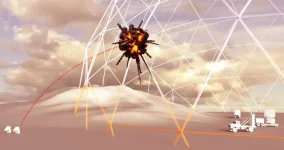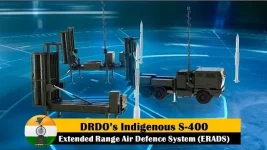- Views: 3K
- Replies: 5
India's indigenous long-range air defence system, 'Project Kusha', is being developed to match the capabilities of Russia's next-generation S-500 "Prometey" system, DRDO chief has confirmed.
This ambitious project aims to provide the Indian Armed Forces with a powerful shield against advanced aerial threats, including stealth fighters, hypersonic missiles, and low-orbit satellites, with deployment scheduled to begin by 2028.
In a significant clarification, Dr. Samir V. Kamat, Chairman of the Defence Research and Development Organisation (DRDO), stated that Project Kusha represents a far greater technological leap than initially perceived. He dismissed direct comparisons to the S-400 Triumf, which India has already inducted.
"It would not be accurate to compare Kusha with the S-400. It is closer in technological scope and operational intent to Russia’s S-500,” Dr. Kamat explained. This positions the made-in-India system in an elite category, as the S-500 is designed to counter the most sophisticated aerospace threats.
Project Kusha is a critical component of India’s multi-layered ballistic missile defence (BMD) architecture. The system will feature three distinct types of interceptor missiles with operational ranges of 150 km, 250 km, and up to 400 km. These will be guided by advanced long-range surveillance and fire-control radars, capable of detecting and tracking targets from extended distances.
The entire system will be integrated into the Indian Air Force's (IAF) Integrated Air Command and Control System (IACCS), creating a seamless and unified air defence network.
The development timeline for this strategic project is on a fast track. A prototype of the system is expected to be ready within the next 12 to 18 months, followed by a period of comprehensive user trials.
The first units are planned for induction into the Indian Air Force and Indian Navy by 2028-2029. Fabrication of the initial batch of the 150 km-range 'M1' interceptor is already underway.
The strategic importance of Project Kusha is magnified by the fact that Russia's S-500 system, known for its ability to destroy hypersonic weapons and satellites, is not currently offered for export. By developing an equivalent system domestically, India is ensuring strategic autonomy and self-reliance in a critical area of national security.
The project, first approved in 2022, also represents a major advancement in India's sovereign defence-industrial capabilities, particularly in sophisticated radar, seeker, and propulsion technologies.



